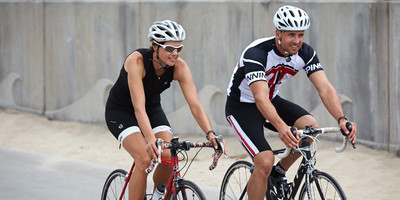
Back to the Basics
Posted by Spinning® on Apr 18th 2018
By Melinda MassieIn a recent Spinning® class, I asked my riders to visualize freeing themselves in class, to expose themselves to whatever might come their way. Spinning workouts give you the unique opportunity to push yourself to new limits and tackle any challenge that presents itself.
As I listened to my own words, I wondered if I had become guilty of coasting as an instructor. When I first began teaching, I approached each class with boundless enthusiasm, eager to share the Spinning program experience and to learn as much as I could to become educated. But I wondered if over the years I had been teaching, I had lapsed into a comfort zone of my own creation. After six years of teaching Spinning classes, I now entered each class feeling pretty secure, but was I still enthusiastically seeking challenges for my own development so I could better help others.
I always kept an eye on when and where Spinning Instructor Trainings were being offered so I could share them with my class. I realized that attending these trainings might recharge my batteries, provide me with new or updated information, and give me an opportunity to ride with a master instructor, so I signed up.
Second Time Around
The day began with a lesson on bike setup and ended with a ride profile created by the group under the master instructor’s direction. My list of helpful tips had grown all day as the Spinning program had made subtle changes over the six years since my first training. Our master instructor that day was a fantastic teacher, and her execution of the ride provided the jump start for which I’d been searching.
Beginning with the warm-up, she talked about the importance of heart rate monitors. I realized immediately that when I lead Spinning classes, I might be focusing too much on people who aren't wearing monitors. I encourage the use of heart rate monitors and have handouts describing how to find target heart rate ranges available for each person. But because few people wear monitors regularly, I rarely teach to them.
The week after my Spinning Instructor Training, I was scheduled to teach an extended hour and a half ride. I decided to try adding more cues directed toward people who were wearing monitors to see what happened. I incorporated challenges using techniques the master instructor had used during our ride while offering options for people who were not wearing monitors.
For example, when we were riding on a flat road at a perceived exertion of 7 out of 10 on the rating of perceived exertion scale (or at 70 percent of their maximum heart rate), I told the class we were entering a “no pass” zone. People wearing monitors were asked to note their heart rates and come up to a run until, and only until, their heart rate climbed by five beats, at which point they should sit back down in the saddle and ride until their heart rate returned to the lower rate. I instructed people who were riding without monitors to come up to a run for 20 pedal strokes and sit back for 40 pedal strokes throughout the segment, unless they started breathing harder. Breathing harder was an indication that they were “passing” another rider, and they should stay in the saddle until their breathing became more controlled.
It was a challenge to move away from externally motivating to encouraging individual responsibility. In order to help people succeed, I found I spent more time off the bike. The master instructor had stressed the importance of working aerobically during the morning session, describing our bodies’ network of capillaries that are built up during aerobic training as “bus stations” that are responsible for the transfer of oxygen and removal of waste products in muscle cells. It was an important reminder of how building a strong foundation allows for a stronger load in the future. I asked people to visualize the building process that was occurring inside their bodies as they rode through the “no pass” zone. After the class, the sheets about heart rate monitors were all taken, and I couldn't wait to teach again.
Challenge Yourself
There are so many ways to open yourself to new challenges as a teacher, to expose yourself to the possibility of change. Put your Spinning Instructor manual beside your favorite chair, try an online course and spend some time exploring the Spinning Community website for articles, tips and resources. Ride with another instructor or ask another instructor to ride with you and give you honest feedback. Ask your class for comments and welcome all input graciously. And of course you can always audit the next Spinning Instructor Training in your area to review the basics.
As a rider and a Certified Spinning Instructor, recognizing that achieving one goal and bettering yourself is, at its best, the starting point of another. Hold on to that thought and the enthusiasm connected with the journey — it never ends!For more workout and teaching tips to help you brush up on your basics, subscribe to our newsletter!
